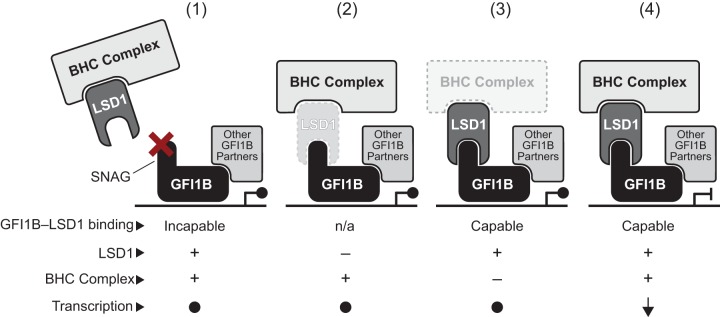FIG 11.
A working model for contributions of the BHC complex to GF1B-mediated repression. LSD1 serves as a bridge between GFI1B and other components of the BHC complex, including HDAC1/2, HMG20A, HMG20B, PHF21A, RCOR1, ZMYM2, ZNF217, and GSE1. Therefore, BHC complex recruitment is rendered LSD1 dependent. A functional GFI1B transcriptional repression complex requires coincident recruitment of these factors, along with other partners brought to the promoter in an LSD1-independent manner by GFI1B or DNA binding proteins with which it collaborates. Dysfunction resulting from an impaired, SNAG-dependent GFI1B-LSD1 recruitment mechanism (1), LSD1 depletion or an intrinsic change that disrupts SNAG binding (2), or ineffective formation or operation of BHC complex components (3) could each poison the GFI1B-LSD1 functional axis to create a permissive state for misexpression of GFI1B-regulated genes. Only when each element is present and functioning properly (4) is the appropriate repressive outcome achieved. trans regulation by each component toward the others, or toward partners that engage GFI1B in an LSD1-independent manner, may also make important contributions to enabling and fine-tuning target gene expression.

